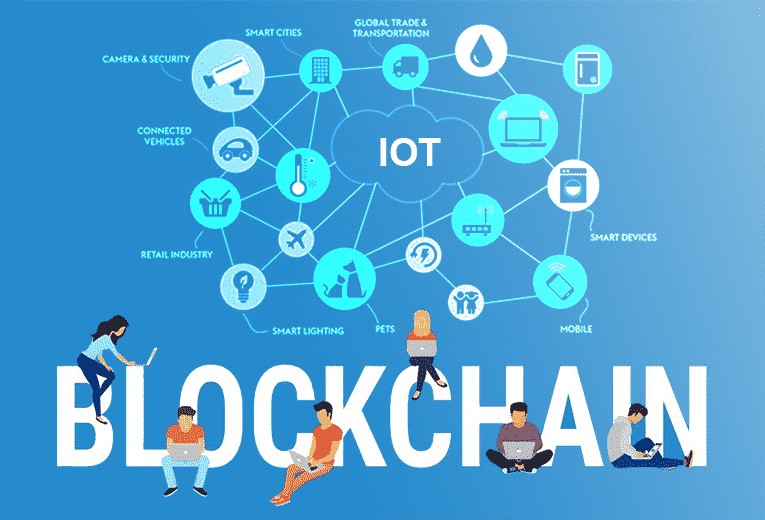In the changing world of integrating technology the combination of internet and blockchain technology is causing a significant change, especially in the realm of the Internet of Things (IoT). This article delves into the ways blockchain is being used in the ecosystem emphasizing how its partnership with high-speed internet is transforming connectivity, security, and data reliability.
Understanding the Essence of Blockchain in IoT
Decentralized Ledger Technology
Blockchain, at its essence, functions as a record-keeping system ensuring transparency, immutability, and security for data transactions. When combined with the Internet of Things (IoT) it plays a role in transforming communication, information exchange, and network functionality, among objects. The integration of high-speed internet further enhances the effectiveness of these interactions.
Applications of Blockchain in IoT
Enhanced Security Protocols
Security stands as a paramount concern in the IoT landscape, where a multitude of interconnected devices exchange sensitive information. Blockchain introduces cryptographic techniques and decentralized consensus mechanisms, bolstering the security protocols of IoT networks. High-speed internet facilitates real-time encryption and decryption processes, ensuring a seamless yet secure flow of data.
Immutable Record-Keeping
The blockchains immutability feature guarantees that once data is logged it cannot be changed or manipulated. In the context of the Internet of Things (IoT) where data integrity is paramount this attribute becomes extremely valuable. With high-speed internet the recording and verification of transactions on the blockchain are accelerated, guaranteeing that the recorded data remains current and trustworthy.
Smart Contracts for Autonomous Transactions
Blockchain facilitates the creation of smart contracts, self-executing agreements with predefined rules. In the IoT realm, this translates to autonomous transactions between devices. High-speed internet enables the swift execution of these smart contracts, reducing latency and ensuring that actions are carried out in near real-time.
Decentralized Device Management
Traditionally, device management involves centralized authorities, creating potential points of failure and susceptibility to attacks. Blockchain decentralizes device management, distributing control among the network participants. High-speed internet enables seamless communication and coordination between devices, enhancing the efficiency of decentralized management structures.
The Role of High-Speed Internet in Blockchain-Enabled IoT
Real-Time Data Transmission
The effectiveness of technology in the Internet of Things (IoT) relies heavily on the capability to swiftly transmit data. In this scenario, a quick internet connection is crucial as it guarantees that the data generated by devices can be promptly transmitted to the blockchain. This immediate transmission is especially crucial in applications such as vehicles, where making split-second decisions is vital.
Scalability for a Growing Network
With the expansion of the Internet of Things (IoT) network, it is increasingly important to prioritize scalability. Having an internet connection is crucial to ensure that the network can handle a range of devices. The ability to scale effectively plays a role in maintaining system efficiency and responsiveness.
Facilitating Consensus Mechanisms
Blockchain relies on agreement mechanisms to validate transactions and ensure the accuracy of the ledger. Fast internet connectivity enables the sharing of transaction details, throughout the network speeding up the process of reaching a consensus. This is vital for ensuring the blockchain remains a reliable and up-to-date record of IoT transactions.
Challenges and Considerations
Bandwidth Limitations
While high-speed internet addresses many challenges, bandwidth limitations can still pose a hurdle, especially in densely populated IoT environments. Solutions like edge computing and network optimization become crucial in mitigating these limitations.
Data Privacy Concerns
Blockchain, by design, is transparent, but the challenge arises in balancing transparency with data privacy. High-speed internet enables the implementation of advanced encryption techniques to address these concerns and maintain a delicate balance between transparency and privacy.
The Future Landscape: Blockchain, High-Speed Internet, and IoT
Edge Computing Integration
The integration of edge computing with high-speed internet and blockchain is poised to revolutionize the IoT landscape. Edge computing brings processing closer to the data source, reducing latency and enhancing the speed at which transactions are recorded on the blockchain.
5G’s Role in Accelerating Connectivity
The advent of 5G technology further amplifies the potential of blockchain-enabled IoT. With unprecedented speeds and low latency, 5G ensures that the synergy between high-speed internet, blockchain, and IoT reaches new heights. Applications like remote surgery, smart cities, and autonomous vehicles stand to benefit immensely from this convergence.
Conclusion: A Symbiotic Future Unveiled
In conclusion, high-speed internet combined with blockchain applications in the Internet of Things sculpts a future where the connection is transparent, safe, and effortless. Blockchain, fast internet, and the Internet of Things are symbiotic, and this connection will only become stronger as we solve problems and embrace new technologies like edge computing and 5G.
The revolution is underway, and the future promises an interconnected ecosystem where data flows effortlessly, devices operate autonomously, and the potential for technological advancements knows no bounds. Embrace the era where high-speed internet meets blockchain in the Internet of Things—a future unfolding at the intersection of innovation and connectivity.

